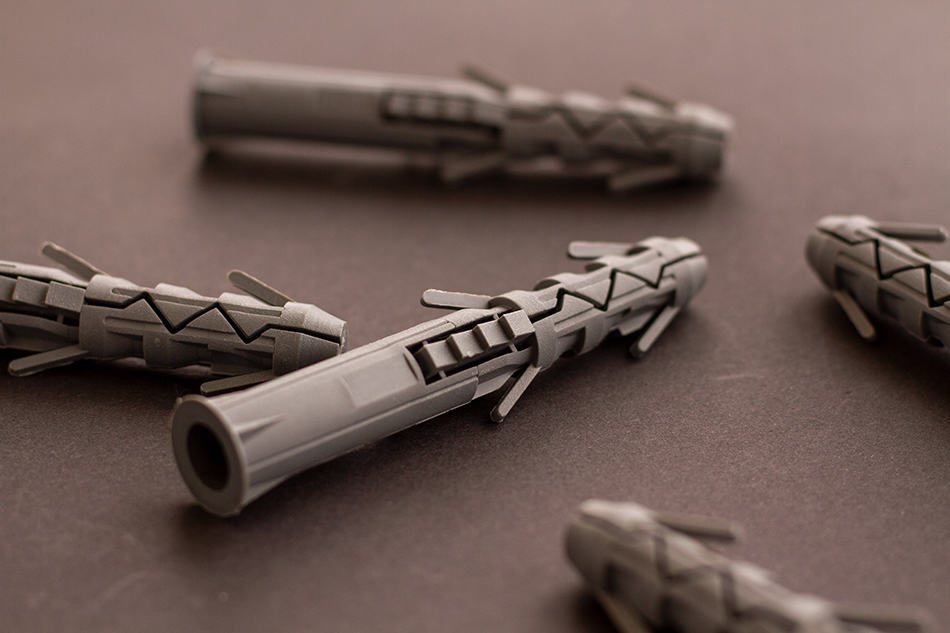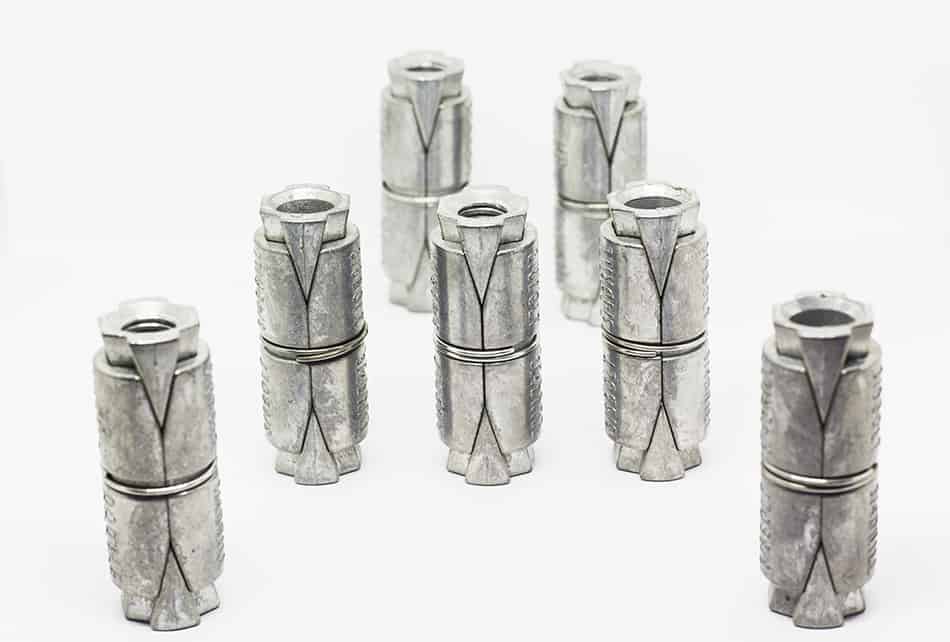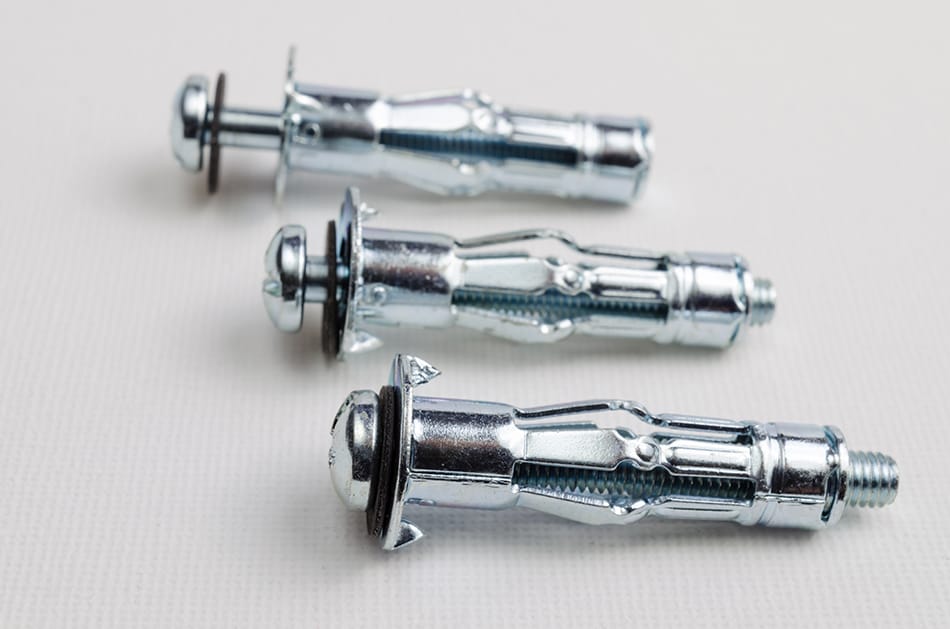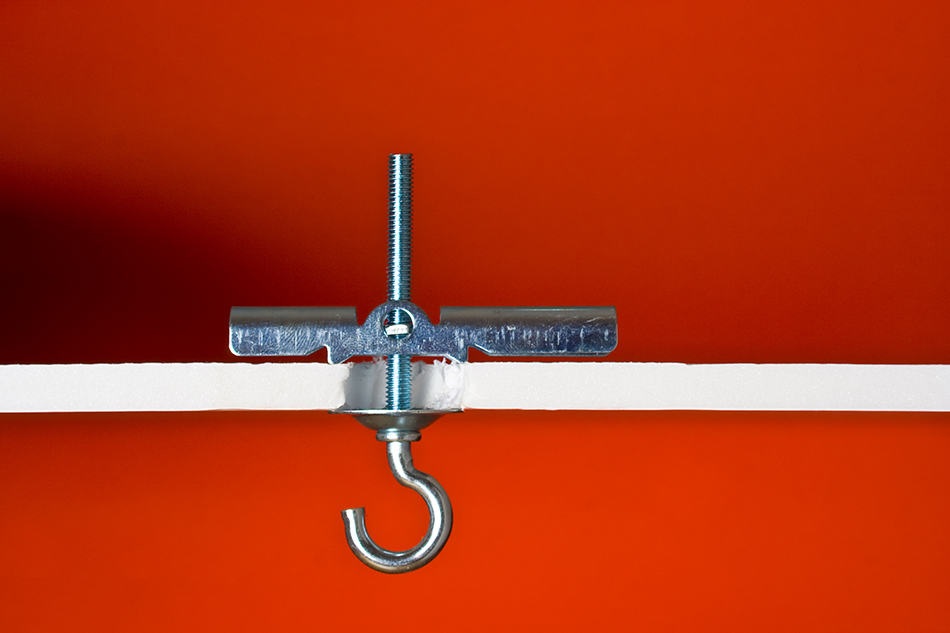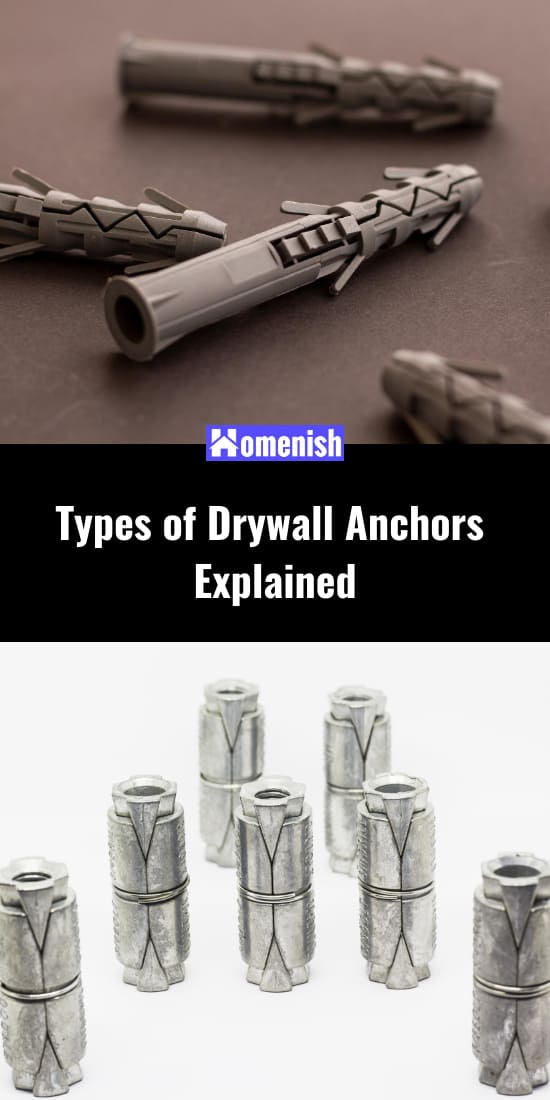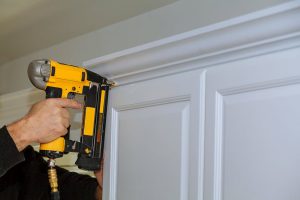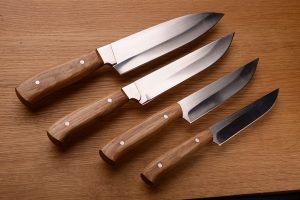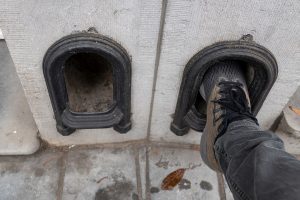Decorating your walls with picture frames and artworks is one way to enhance the appearance of your home. In fact, a lot of wall decor can add life to a room. Keep in mind that using nails to mount or hang objects on the wall is not the best option, especially if you’re hanging a heavy item.
The good news is that there are tools designed for this purpose. You can use drywall anchors to ensure that the portrait or shelf that you hang on the wall will not fall off after some time.
Unfortunately, there are various types of drywall anchors available on the market. Additionally, each type of anchor is designed for a specific purpose. Because of this, people who are not familiar with drywall anchors will surely get confused, especially if they are facing a lot of choices.
Fortunately, we can help you identify the different types of drywall anchors. At the same, we can also provide you with their description and uses. Through this, you will be able to pick the right tool the next time you go to a hardware store.
What is a Drywall Anchor?
As its name implies, a drywall anchor is an insert or a tool that “anchors” something to the drywall. Keep in mind that drywall is made with soft materials, such as paper and gypsum. As such, it can be easily damaged.
You may be able to place a nail into the drywall; however, you can only hang something light, like a calendar. If you want to hang a floating shelf or a large painting, a drywall anchor is needed.
Drywall anchors will allow you to place screws into the wall without damaging the soft drywall. They are also deep, allowing them to carry the weight of whatever item you’re hanging on the wall. The best part is that drywall anchors are inexpensive and easy to use, making them a handy addition to any toolbox.
Types of Drywall Anchors
Expansion Anchors
If you want to hang a picture frame or any lightweight object on the drywall, using an expansion anchor is a good option. The reason is that this drywall tool can support any items that weigh 15 pounds.
Aside from that, it is easy to install. All you have to do is to drill a tiny hole and insert the anchor into the wall using a hammer. From there, you can put the screw and fasten it with a screwdriver.
Expansion anchors are the most common type of drywall anchors. They have a small and basic appearance, and they are often included in shelf kits. Most expansion anchors are made of plastic. As such, they are cost-effective, and you can purchase them in packs, ranging from 20 to 100 pieces.
Lastly, this type of drywall anchor comes in a variety of colors and sizes to accommodate your needs.
Keep in mind that expansion anchors are not durable, and they are only designed to support objects with a weight of 15 pounds. Using this anchor for heavy items will eventually lead to a problem.
For example, the anchor may come out of the wall after a few months, damaging the object that you mounted on the wall. To avoid this problem, you can always opt for sturdier types of drywall anchors, like the toggle bolts.
Unlike most drywall anchors that lock or fasten at the back of the wall, expansion anchors will expand within the wall. As a result, it may break down the wall after some time.
Self-Drilling or Threaded Anchors
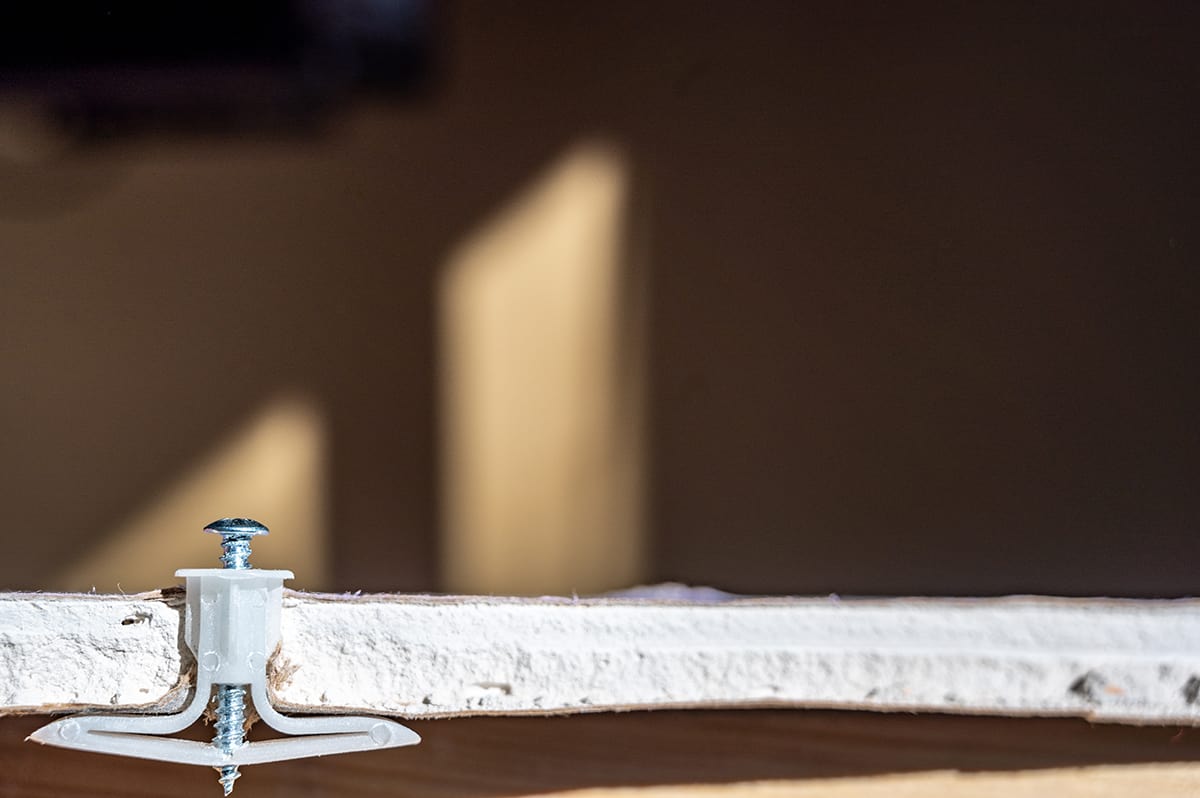
Another unique feature of a threaded or self-drilling anchor is that it looks like a small screw. This feature allows you to put the anchor into the wall without drilling a hole. All you have to do is to use a screwdriver to insert the anchor into the wall. Once you’ve placed the anchor, you have to insert the screw, forcing the sides of the anchor to wedge tightly against the drywall.
Because self-drilling anchors are made with sturdier materials, they are designed to hold or support objects with a weight of as much as 50 pounds. For this reason, you can use this type of drywall anchor to hang a floating shelf or curtain rods.
However, using self-drilling anchors to hang a television on the wall is not recommended, even if it only weighs less than 50 pounds. Remember, a TV is expensive, so you should use a heavy-duty anchor to ensure safety.
Keep in mind that a self-drilling anchor will leave a large hole in the wall; thus, you should get the position right. To achieve this, you can draw a layout first before drilling any holes. Aside from that, this type of drywall anchor is not suitable for concrete walls. Lastly, the anchor may break if you sunk it in a wood or steel stud.
Even though this type of drywall anchor has some drawbacks, it also offers numerous advantages. One, in particular, is convenience and ease of use. Remember, you only need to use a screwdriver when installing threaded anchors because of their screw-like structure.
As such, you can install it with ease without making any pre-drilled holes. Because of this feature, you can easily remove and move the anchor to another location. Finally, it also comes in a variety of styles and sizes to accommodate different weight loads.
Steel Hollow-Wall Anchors
Steel hollow-wall anchors are also known as molly bolts, and they are among the strongest drywall anchors on the market. As the name suggests, this type of drywall anchor is used in hollow walls such as thin walls, plasterboard, drywall, or other surfaces that do not require hanging heavy objects.
In fact, this tool is the ideal choice if you’re going to hang heavy objects on the wall because it can support items with a weight of up to 100 pounds.
As such, you can use it to hang coat hangers, huge towel racks, heavy mirrors, and even a television stand.
For its appearance, a steel hollow-wall anchor looks like a metal casing that can fit over a bolt or a screw. Once you drive it into a wall, its metal casing will start to expand, creating an anchor inside the drywall. This feature gives the tool a firmer grip compared to the less durable anchors.
Plus, it ensures that the screw is secured. Because of this feature, you can use this anchor if you want to hang objects on support beams or the ceiling. Plus, it is also the recommended anchor if you don’t know the depth of your wall.
Typically, steel hollow-wall anchors are coated with zinc, making them incredibly durable. Plus, you can use this drywall anchor in cold and damp areas because of its resilient coating. Also, molly bolts can be used on tiles and plaster walls.
To install a steel hollow-wall anchor, you will need a driller, a screwdriver, and a hammer. You can start the installation process by drilling a hole in the wall. Afterward, you can insert the anchor and set it up using a hammer. Once everything is lined up, all you need to do is fasten the anchor into the drywall.
As mentioned, the metal casing of the anchor will expand once it is inside the wall. Still, you need to ensure that the screw is tight. To do this, you can use a power driller or a screwdriver. From there, you can feel confident that anything you hang on the wall will not fall as long as the weight of the object is not more than 50 pounds.
Overall, molly bolts are durable and easy to install. Additionally, you can also use them in a lot of medium-duty applications, making them one of the best drywall anchors on the market.
Toggle Bolt Drywall Anchors
If you’re going to hang a shelf that will carry a lot of heavy objects, a toggle bolt is the best drywall anchor you can use due to various reasons. For one, it is one of the sturdiest anchors on the market. In fact, it is designed for heavy-duty use with a weight capacity of 100 to 300 pounds.
Plus, toggle bolts are typically made with premium materials, which ensures durability. Also, it comes in a variety of styles and sizes to accommodate your needs.
Compared to the other drywall anchors on this list, a toggle bolt has a unique design. To be specific, this anchor doesn’t appear like a casing. Still, you have to place the screw into the hole and thrust it in.
Installing a toggle bolt is easy. The first step is to drill a hole in the drywall and insert the toggle bolt into the hole. Once screwed, it will expand in the drywall, giving the anchor the extra grip it needs. Unfortunately, you won’t be able to remove the screw once it’s tightened.
Because of its heavy-duty design, you can use toggle bolts to hang large items, like mirrors and portraits. You can also use it if you want to mount an item on your ceiling, but the maximum weight capacity is only 15 pounds. Hanging an object that weighs more than its weight capacity will lead to a damaged item or ceiling.
Despite its great qualities, this type of drywall anchor has a few disadvantages. For one, it leaves a massive hole in the wall. As such, you have to make a layout first before drilling. Additionally, if you lose this anchor in the wall, retrieving it is impossible.
There are two kinds of toggle bolts available on the market, which includes the following:
Traditional Metal Toggle Bolts
Traditional metal toggle bolts are the strongest type of toggle bolts. As such, you can safely hang anything using this anchor. Unfortunately, installing it is not a simple task because it requires a hole that is about three times wider than its diameter. A large hole is necessary so you can insert the bolt into the wall.
Aside from that, this type of toggle bolt features wings that can fold flat or expand against the bolt when you insert it into the wall. Once inserted, you have to twist the bolt to loosen the wings, which results in the wings flaring outward. Afterward, you have to tighten the bolt using a screwdriver. From there, the wings will be drawn inward, forming a strong brace at the backside of the wall.
The installation process may seem simple. However, in reality, tightening the bolt can be challenging because you have to make sure that the bolt is at the center of the hole when you’re fastening it. This step may require some practice. Once you get it right, you’ll be impressed with the durability and holding power of this drywall anchor.
Installing a traditional metal toggle bolt can be challenging. Still, it is one of the best drywall anchors you can use, especially for heavy-duty applications. Plus, it is made of metal, which ensures durability.
Winged Plastic Anchors
Winged plastic anchors are shaped like a letter T. Additionally, this type of toggle bolt is stronger than plastic expansion anchors. Also, it is recommended for medium-duty applications. Aside from that, this drywall anchor features plastic wings that can fold tightly together, allowing you to insert the bolt into a pre-drilled hole.
Compared to traditional metal toggle bolts, installing winged plastic anchors is easier. But, you’ll need a special tool, which is typically included in the package.
Like most drywall anchors, the first step in installing a winged plastic anchor is to drill a hole. Afterward, you have to fold the wings together and insert the bolt into the hole. Next, you need to use a special tool to push the center of the wings, allowing them to expand inside the drywall.
Keep in mind that you have to do this step to ensure that the anchor will function properly. If you don’t have the special tool, you can also use a screwdriver to expand the wings of the bolt.
Always remember that winged plastic anchors are made with plastic. As such, you have to install them with care. Exerting too much force may rip the screw or damage the wings. Aside from that, if you tighten the screw too much, it may strip the threads, resulting in a weaker anchor.
Despite their limitations, winged plastic anchors are still great for medium-duty applications. In fact, they can hold or support any objects with a weight of 25 to 35 pounds, especially when installed properly.
Strap Toggle Drywall Anchors
Strap toggle drywall anchors have similarities with toggle bolt drywall anchors. In fact, the two types of drywall anchors follow the same principles with a slight difference.
As its name implies, a strap toggle uses a strap to add more support to the bolt. Aside from that, installing this anchor is quite straightforward compared to a toggle bolt. To be specific, a strap toggle only requires a small hole, while a toggle bolt needs a sizeable hole.
This feature benefits people who are renting their homes. Remember, if you’re living in an apartment, you want to avoid making large and noticeable holes that may negatively affect your deposit. If you only make small holes, you can easily cover it up.
Another advantage of using a strap toggle is its weight capacity. Depending on its size, this anchor can hold or support objects with a weight of 200 to 500 pounds. As such, it is the ideal anchor for hanging floating shelves that will carry a lot of loads.
To install this type of drywall anchor, you’ll need elbow grease and a driller. After making a small hole, you can insert the anchor through the hole. Afterward, hold the ends of the strap and pull them towards you until the channel rest at the backside of the wall.
From there, you have to slide the flange until it reaches the cap of the wall. Then, you have to snap the straps, insert the bolt, and tighten it using a screwdriver. Once properly installed, you will notice that hanging heavy objects is hassle-free if you use this anchor.
Overall, strap toggle drywall anchors are the most expensive type of drywall anchors. Even so, they are the most reliable tools you can use if you’re going to mount a heavy object on the wall. Another drawback is it leaves a mark on the wall. As such, you have to make a layout first before installing the anchor.
Despite its limitations, strap toggle drywall anchors are still considered the strongest and the most dependable type of anchor, especially for heavy-duty applications.
